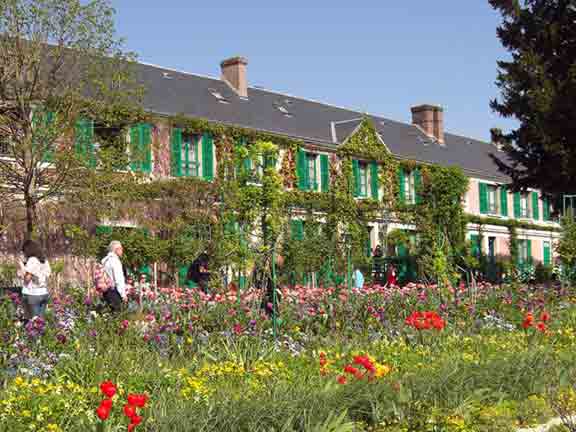annebarone.com
French Chic & Slim
Nouvelles
News and Opinion from Anne Barone to Keep You Chic & Slim
|| 28 august 2014
French Seeds
Guest Nouvelles By Ann Leslie in New York
I'VE HAD A LOT OF FUN growing French vegetables. Aside from making me feel French and glamorous, it's very practical to have a garden of vegetables that are difficult or impossible to find in the store. Canned petit pois are wonderful, but are nothing compared to fresh ones.
Back then I ordered seeds from a company in Topeka, Kansas, called J.A. Demonchaux. He grew French varieties and sold the seeds in the U.S. Unfortunately, his company no longer exists. The only place I know of today which sells exclusively French seeds is L'Atelier Vert. Vegetable seeds are at http://tinyurl.com/ke6489d, and French wildflower seeds are at http://tinyurl.com/pw57wqb. I couldn't find other companies that export seeds to the U.S., but with persistence you may be able to find some that do.
French Vegetables
However, it is now quite common to find seeds for French vegetables in mainstream American seed catalogues like Burpee's. In addition, many vegetables grown by American home gardeners are of French origin, such as Rouge d'hiver lettuce (which I had great success with, even in hot weather), French breakfast radishes (the French eat them raw with butter and salt), Nantes carrots (short and thick, which grew well in my clay soil), and Charentais melons (like small round cantaloupes).
If you live in the right place (i.e., California), you can grow my favorite vegetable, artichokes. I live in the Northeast and found a variety that was supposed to be possible for me to grow. They were just starting to produce buds when they were mowed down by some non-human species which apparently also loves artichokes, so I can't report on whether they would have been successful.
You can also order plants for fraises des bois, tiny French "wild" strawberries, or even find them in a garden center. They were easy to grow and with the probable help of birds, they self-seeded everywhere, so that I still find them scattered all over many years later. They are highly prized by most people, but I'm afraid I'm not partial to their delicate flavor, which reminds me of anise.
Mesclun is so trendy now that it's easy to find seeds for its ingredients. You can sow mixtures of roquette (French for arugula), curly endive, mache, radicchio, cress, chicory, whatever herbs you like, etc., or buy packets of mesclun mix. Clip off the tops each day for your salad.
If you love Belgian endive and have a cool, dark place to keep it, you can grow it in your garden, then dig up the roots and store them indoors to force and blanch into those delicious bitter heads that are so expensive in the supermarket. A little work, and you'll have a supply for your salads - or for braising - through the next spring.
Some other typical French vegetables to try are petits pois, cardoons, salsify, tiny cornichon cucumbers (to pickle or eat fresh), shallots, leeks, purslane, and haricots verts (thin, young green beans).

French Flowers
I did once have some flowers that came directly from France. A friend visited Giverny and brought me back a souvenir packet of seeds for annuals. I remember wallflowers in a wonderful golden orange, little California-type poppies, chicory (Bachelor's Button), forget-me-not, and possibly blue or red flax. The wallflowers and forget-me-nots even self-seeded for a few years. I know that his gardens were recreated and that the plants weren't original to it, but I still liked to pretend that my forget-me-nots were direct descendants of the actual flowers painted by Monet himself.
Ann Leslie in New York
Photo: Flowers at Giverny, Normandy Tourist Board via Wikipedia